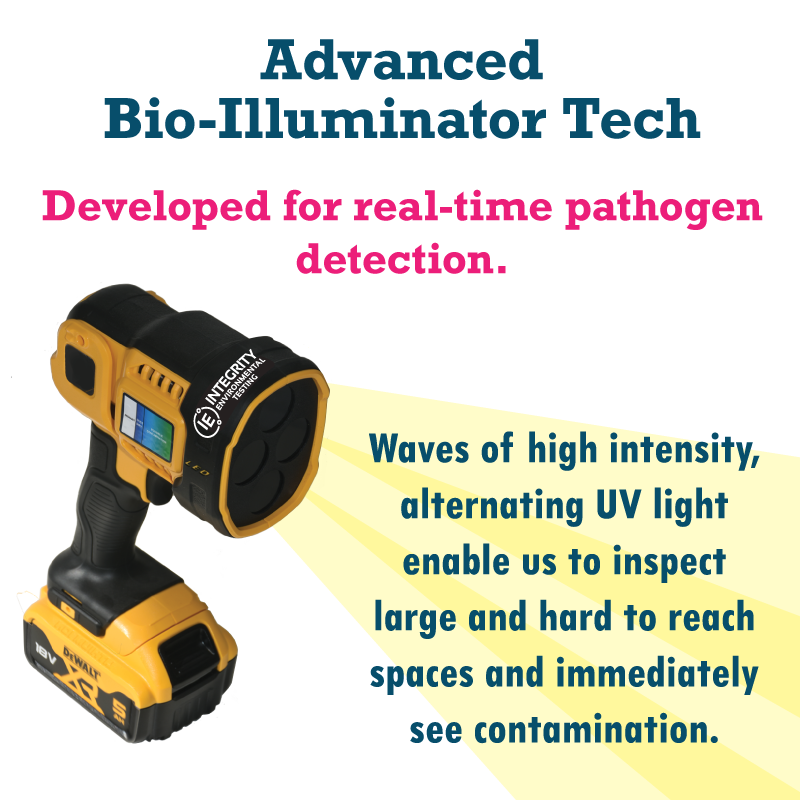Concerned about Biological Contaminates? Get Answers Fast!
Does Your Colorado Space Need an Adenosine Triphosphate (ATP) Test?
An ATP test, or Adenosine Triphosphate test, is often used to measure the level of microbial contamination on surfaces. It’s like a cleanliness check for various environments, especially in places like hospitals, food processing facilities, or even in your home. If someone is concerned about hygiene and wants to ensure that a surface is free from harmful microorganisms, an ATP test can provide quick and accurate results.
The Bio-Illuminator: Enhancing ATP Test Effectiveness

Advanced Bio-Illuminator Tech was developed for real-time pathogen detection, complimenting and completing standard ATP Testing. Without the Bio-illuminator, you’re guessing that the ATP sample spot is representative of the entire surface. The Bio-Illuminator allows us to see where the contaminates are, narrowing the areas to be swabbed.
Waves of high intensity, alternating UV light enables us to inspect large and hard to reach spaces and immediately see contamination.

Always Free Phone Consultations

Call Now!
We’ll Call You!
Certified professionals – experts in environmental hazards – are ready to answer your environmental testing questions.
FAQs
What is Adenosine Triphosphate?
Adenosine Triphosphate, or ATP, is an energy molecule found in all living things, which makes it a perfect indicator to determine whether or not a surface is clean/sanitized.
What is ATP Surface Testing used for?
Testing for ATP is used as a tool to quickly determine cleanliness—regardless of whether the ATP detected originates from benign sources or pathogens. It can benefit hospitals, food preparation areas, restoration projects, and any space requiring high hygiene standards. Companies mostly use ATP swab tests, like a Luminometer, to quickly verify surfaces have been cleaned thoroughly in a variety of industries including restoration.
In conjunction with the ATP swab test, we use advanced technology which allows us to find contamination in hidden places and large areas, pinpointing where to use the swab test.
How does the ATP device find contaminants?
In an ATP test, the ATP is brought into contact with a reagent in the test device. Next, light is emitted in direct proportion to the amount of ATP present in the sample, providing information on the level of contamination in a matter of seconds.
Who might need an ATP surface test?
Whether you have concerns about COVID, or are just looking to assess the cleanliness from biological contamination, a clean environment is the first step to peace of mind. ATP testing has many uses in the hospitality and food industries as well.
Why is ATP testing important?
It helps verify the efficacy of cleaning procedures and ensures surfaces meet hygiene standards.
The Bio-Illuminator makes ATP testing more precise by identifying contamination hotspots before testing.
What does the Bio-Illuminator do?
It detects both healthy and stressed bacteria, which can alter their physiology to survive.
It can identify biofilms, which are microbial communities.
How does the Bio-Illuminator work?
It is instant, reagentless, and cost-effective.
It uses specific UV wavelengths to excite the S-layer of bacterial cell walls, making contamination visible in real time.
Waves of high-intensity, alternating UV light allow for inspection of large and hard-to-reach areas, ensuring a more thorough assessment.
